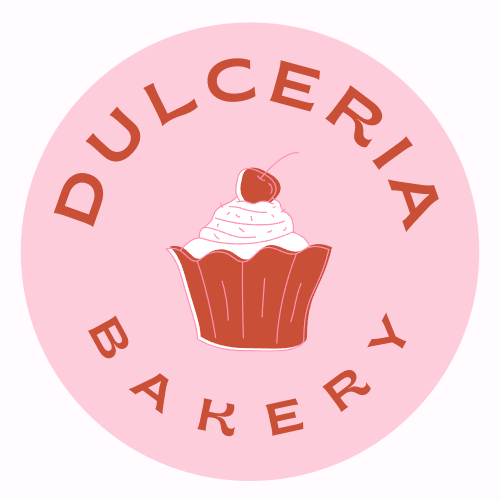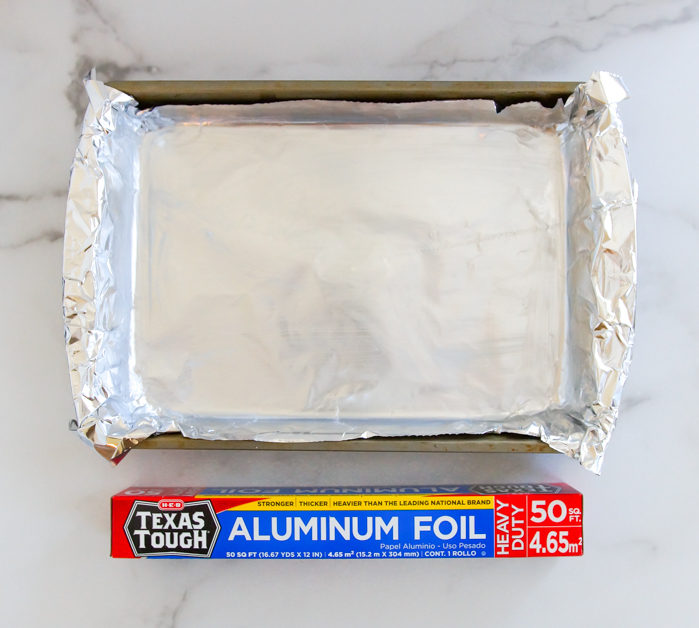A foil-lined baking sheet is a baking sheet that is lined with aluminum foil. Aluminum foil is a thin, flexible metal sheet that is used in many applications, including cooking and baking. When it is used to line a baking sheet, it can help to prevent food from sticking to the sheet and make it easier to clean up after cooking.
Foil-lined baking sheets are often used to bake cookies, roast vegetables, and cook meats. They are a popular option in many kitchens due to their convenience and ease of use.
What is a foil lined baking sheet?
A foil-lined baking sheet is a baking sheet that has been lined with aluminum foil. The aluminum foil provides a non-stick surface that makes it easier to remove baked goods from the pan and prevents them from sticking to the surface. The foil also helps to distribute heat evenly across the surface of the pan, which can result in more evenly cooked food.
Additionally, using a foil-lined baking sheet can help to prevent the need for scrubbing and cleaning the pan after use, as the foil can be removed and disposed of, leaving the baking sheet relatively clean. Foil-lined baking sheets are a popular option in many kitchens due to their convenience and ease of use.
Which kinds of food can you use in foil lined baking sheet?
Foil-lined baking sheets can be used for a variety of different foods. Here are some examples:
- Baked goods: Foil-lined baking sheets are often used for baking cookies, biscuits, scones, and other baked goods. The non-stick surface of the foil can help to prevent the baked goods from sticking to the pan and make them easier to remove.
- Roasted vegetables: Foil-lined baking sheets can also be used for roasting vegetables in the oven. The even heat distribution provided by the foil can help to cook the vegetables evenly and prevent them from sticking to the pan.
- Meats: Foil-lined baking sheets can be used to cook meats in the oven, such as chicken, beef, pork, and fish. The non-stick surface of the foil can help to prevent the meat from sticking to the pan, making it easier to remove and reducing the amount of cleanup required.
- Grilled sandwiches: Foil-lined baking sheets can also be used to make grilled sandwiches in the oven. The non-stick surface of the foil can help to prevent the bread from sticking to the pan and make it easier to remove the sandwich once it is cooked.
Overall, foil-lined baking sheets can be used for a wide variety of different foods and are a versatile tool in the kitchen.
Why should you use foil lined baking sheet?
There are several reasons why you might choose to use a foil-lined baking sheet:
- Non-stick surface: The aluminum foil lining of the baking sheet provides a non-stick surface, which can help to prevent food from sticking to the pan. This can make it easier to remove baked goods, vegetables, or meats from the pan and reduce the need for extra oil or cooking spray.
- Even heat distribution: The aluminum foil can also help to distribute heat more evenly across the surface of the baking sheet. This can result in more evenly cooked food and reduce the likelihood of burning or uneven cooking.
- Easy cleanup: Using a foil-lined baking sheet can also make cleanup easier. Once you are finished cooking, you can simply remove the foil from the pan and discard it. This can save time and effort compared to scrubbing a traditional baking sheet.
- Versatility: Foil-lined baking sheets can be used for a variety of different foods, from baking cookies to roasting vegetables and cooking meats. This versatility can make them a useful tool to have in the kitchen.
Overall, using a foil-lined baking sheet can provide several benefits, including a non-stick surface, even heat distribution, easy cleanup, and versatility.
How to use foil lined baking sheet
Using a foil-lined baking sheet is similar to using a regular baking sheet, with a few key differences:
- Preheat your oven: Before using a foil-lined baking sheet, preheat your oven to the desired temperature.
- Line the baking sheet with foil: Take a sheet of aluminum foil and cut it to size to fit your baking sheet. Make sure that the shiny side is facing up. Press the foil into the baking sheet, making sure that it is completely flat and covers the entire surface of the pan.
- Prepare your food: Place your food on the foil-lined baking sheet, making sure to leave enough space between items for air to circulate.
- Cook your food: Place the baking sheet in the preheated oven and cook your food according to the recipe’s instructions.
- Remove your food: Once your food is finished cooking, remove the baking sheet from the oven and carefully remove your food from the foil-lined baking sheet using a spatula or tongs.
- Discard the foil: Once you have removed your food, discard the foil. Be careful, as the foil may be hot from the oven.
Note: When using a foil-lined baking sheet, it is important to keep in mind that the foil can tear or rip if you use sharp or pointed utensils on it. To avoid this, use a spatula or tongs with a flat surface to remove your food from the pan.
Is it safe to line baking sheets with aluminum foil?
Yes, it is generally safe to line baking sheets with aluminum foil. However, there are a few things to keep in mind to ensure that you are using the foil safely:
- Use food-grade aluminum foil: Make sure to use aluminum foil that is labeled as “food-grade.” This means that the foil has been made specifically for food use and is safe for cooking and baking.
- Avoid acidic foods: Avoid using aluminum foil to cook or store acidic foods, such as tomato sauce or citrus fruits. The acid in these foods can react with the aluminum foil and cause it to break down, potentially releasing aluminum into your food.
- Don’t let the foil touch hot elements: Make sure that the foil is not touching any heating elements in your oven. This can cause the foil to heat up too quickly and potentially catch fire.
- Don’t use damaged foil: If the foil is torn, punctured, or damaged in any way, it may not provide a safe barrier between your food and the baking sheet. Discard any damaged foil and use a new piece.
Overall, as long as you follow these guidelines, using aluminum foil to line baking sheets should be safe for cooking and baking.
How long does it take to use foil lined baking sheet?
The time it takes to use a foil-lined baking sheet depends on what you are cooking and how long it takes to cook. For example, baking a batch of cookies may take 8-12 minutes, while roasting vegetables in the oven could take 20-30 minutes or longer.
Using a foil-lined baking sheet should not add significant time to the cooking process, as it is a relatively quick and easy step. The time it takes to line the baking sheet with foil will depend on the size of the sheet and how quickly you can press the foil into the pan and smooth out any wrinkles or creases.
In general, using a foil-lined baking sheet can actually help to speed up cleanup time, as you can simply remove the foil from the pan and discard it once you are finished cooking. This can save time and effort compared to scrubbing a traditional baking sheet.
Tips for using foil lined baking sheet
Here are some tips for using a foil-lined baking sheet:
- Use heavy-duty aluminum foil: When lining your baking sheet with foil, use a heavy-duty foil that is less likely to tear or puncture. This will help to prevent your food from sticking to the pan and ensure that the foil stays in place during cooking.
- Use a double layer of foil for extra insulation: If you are cooking something that requires a longer cooking time or higher oven temperature, consider using a double layer of foil. This can help to provide extra insulation and prevent the bottom of your food from burning.
- Use non-stick cooking spray: Even if you are using a foil-lined baking sheet, it’s a good idea to spray the foil with non-stick cooking spray to prevent your food from sticking. This can also help to make cleanup easier.
- Don’t overcrowd the pan: When using a foil-lined baking sheet, make sure to leave enough space between items for air to circulate. Overcrowding the pan can cause your food to cook unevenly and stick to the foil.
- Use caution when removing the foil: After cooking, the foil can be hot and may tear or break apart. Use caution when removing the foil from the pan and transferring your food to a serving platter or storage container.
- Clean the pan after use: Even though the foil will catch any spills or drips, it’s still a good idea to clean your baking sheet after use to prevent any bacteria or odors from developing. Simply remove the foil and wipe down the pan with soap and water, or place it in the dishwasher if it is dishwasher safe.
Related Posts
What are acetate sheets used for in baking?
Disclaimer: There are affiliate links in this post. At no...
Read MoreHow To Choose The Best Baking Sheet Organizer For Your Home
Disclaimer: There are affiliate links in this post. At no...
Read MoreHow To Clean A Baking Sheet Properly
Disclaimer: There are affiliate links in this post. At no...
Read MoreAluminum Vs Stainless Steel Baking Sheet – Which Is Right For You?
Disclaimer: There are affiliate links in this post. At no...
Read MoreWhy Trust Us
You will find what you are looking for at dulceriabakery. From classic to luxury brands, you'll find both. We will help you to select appliances that fit your needs, budget and lifestyle. Whether you want to stop by to learn more — or plan to make a major purchase — we’ll treat you like family and assist you every step of the way. Shop with us today to receive friendly and experienced help along the way.





